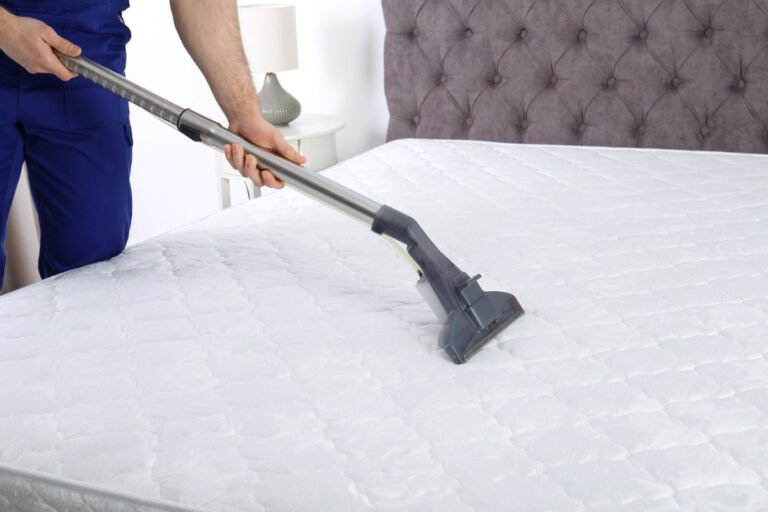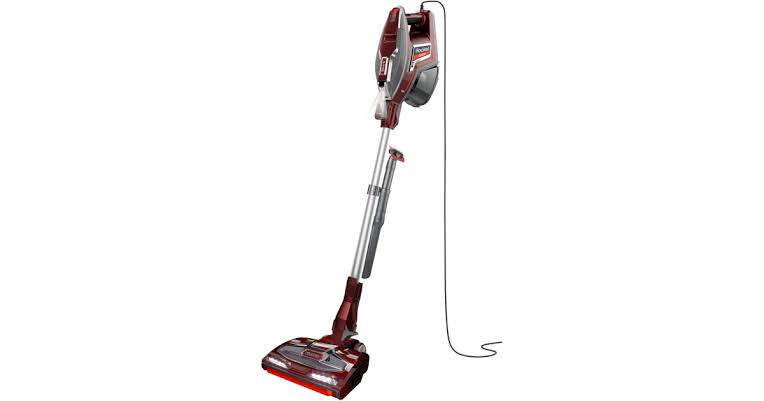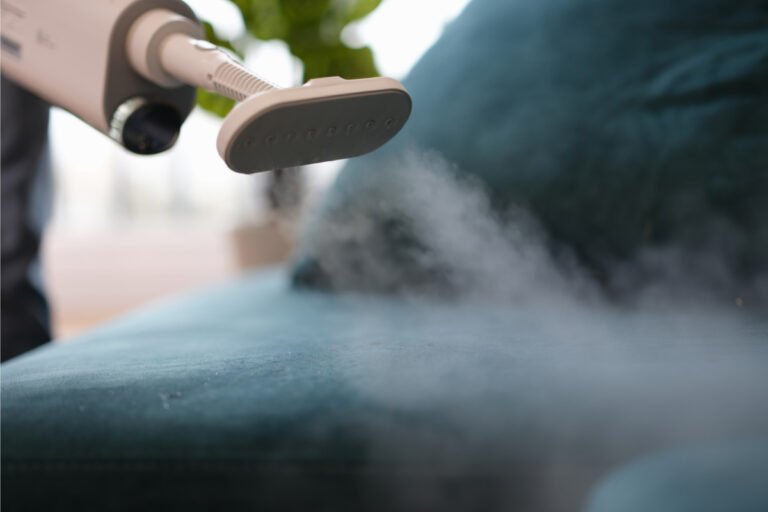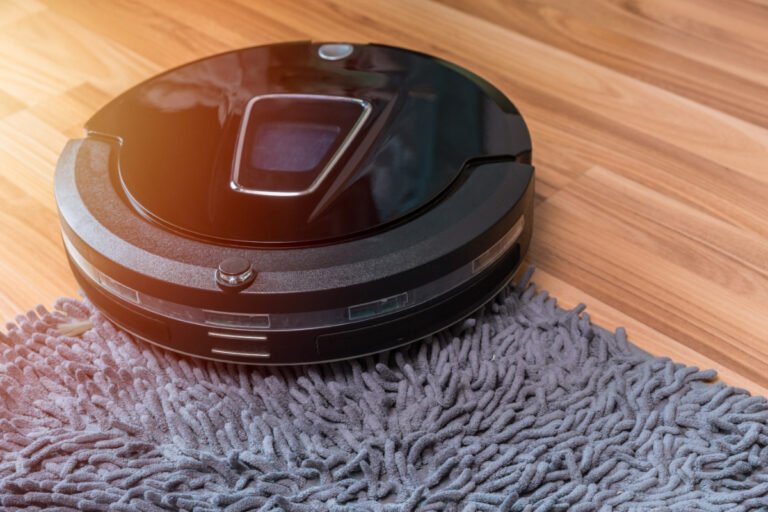Tidy Homes Made Easy: How Does a Robotic Vacuum Cleaner Work
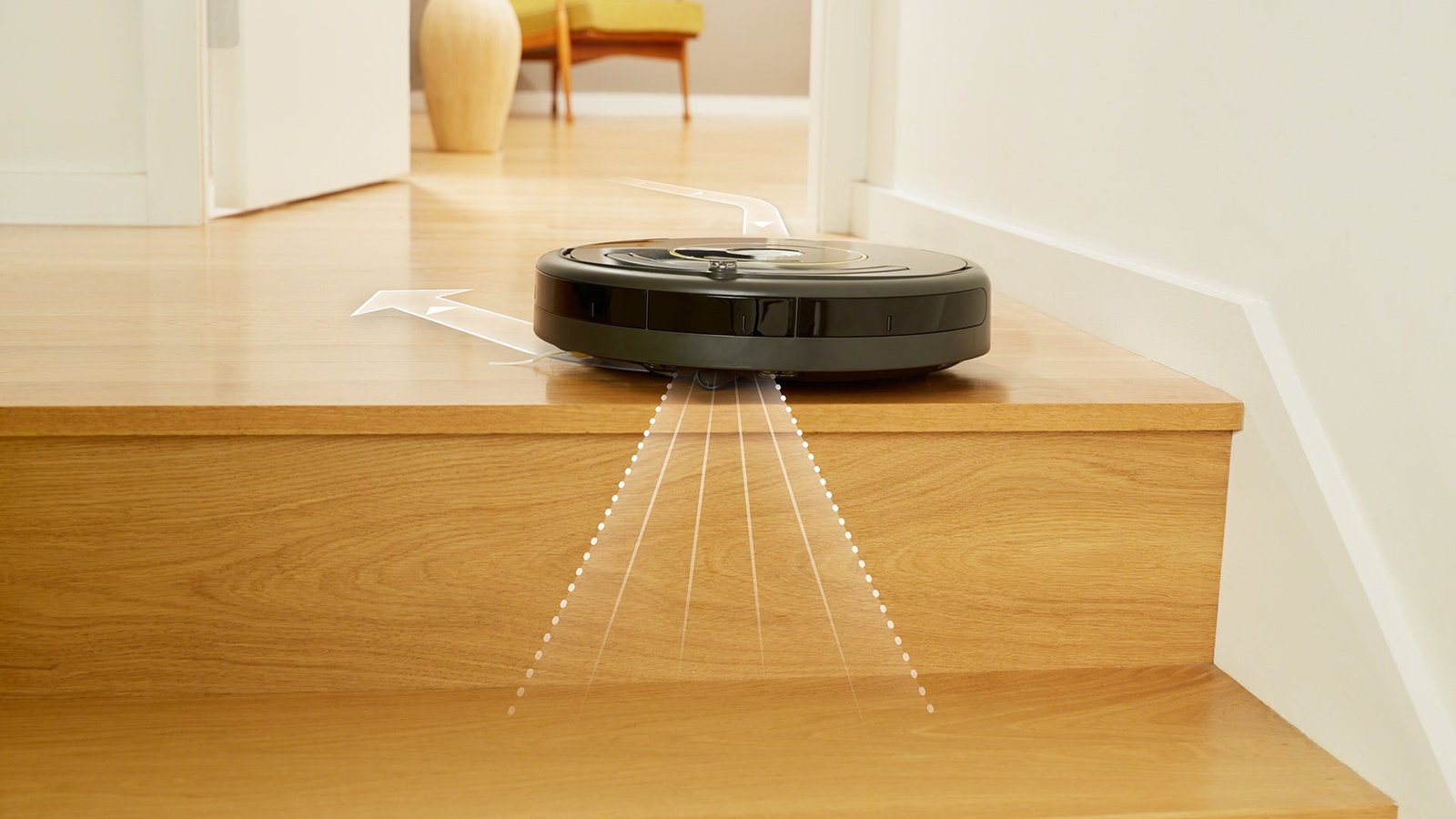
A relaxing Sunday afternoon. You are reading a fantasy novel in your favorite armchair, engrossed in imagination and adventure. As the narrative climaxes, you remember to vacuum the home. Moving a big vacuum cleaner and furniture shakes you out of your reading reverie. Be patient! What if you could clean your floors without touching them? The wonder of technology comes in. Have you ever wondered, “How does a robotic vacuum cleaner work?” You will discover.
Robotic vacuum cleaners have transformed house maintenance. Cleaning is laborious, but these little, automated machines let us concentrate on more essential or fun things. Robot vacuums clean better than ordinary vacuums due to their enhanced features. These smart devices demonstrate current technology, from sensors that detect filth and waste to navigation systems that map your house for effective cleaning.
The following parts will explore the interesting world of robotic vacuum cleaners. We will explain how they function, what makes them distinct, and why buying one might transform household duties. This book is for techies and busy homeowners trying to simplify their lives.
What is a Robotic Vacuum Cleaner?

Imagine a disc-shaped device, quietly humming as it navigates around your living room, effortlessly sucking up dust, pet fur, and crumbs in its path. It is no science fiction – it’s a robot vacuum cleaner, a marvel of modern technology transforming our housekeeping approach.
A robotic vacuum cleaner is an autonomous device designed to clean carpets, tiles, and hardwood floors of all dirt and debris. Unlike traditional vacuums, these devices don’t require human operation. Instead, they use sensors and algorithms to navigate your home, identify dirty areas, and clean them efficiently. Most models come with a docking station where they return to recharge after finishing their cleaning cycle or when their battery runs low.
They’re compact, lightweight, and equipped with features like HEPA filters that trap allergens, making them a great choice for those with allergies or respiratory issues. Moreover, many models can be controlled through smartphone apps or smart home systems, offering you convenience and flexibility at your fingertips.
How Does a Robotic Vacuum Cleaner Work?
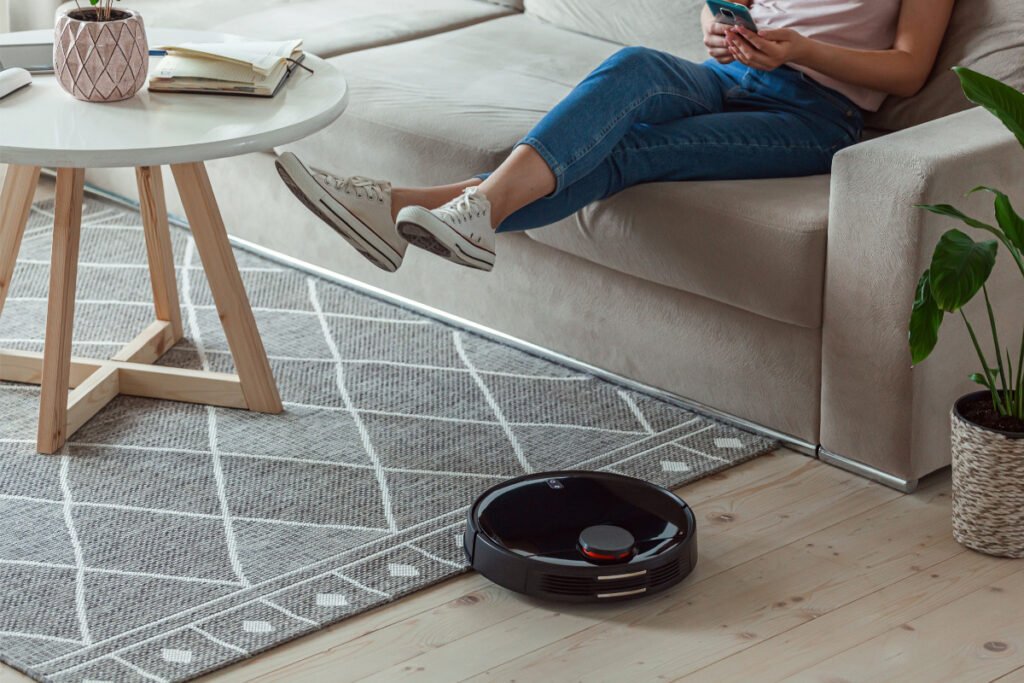
Have you ever stopped to watch a robot vacuum cleaner and wondered, “How does it know where to go?” or “How does it avoid falling down the stairs?” It’s all thanks to a symphony of sophisticated technology working seamlessly together. Let’s peel back the layers and look at the tech that makes these smart machines tick.
🔧Sensors and Navigation
The primary navigational tool of a robotic vacuum cleaner is its array of sensors. These sensors are its eyes and ears, guiding it around your home while avoiding obstacles and drops like stairs. There are several types of sensors at work in a typical robotic vacuum cleaner:
Infrared Sensors: These help detect obstacles in the path of the vacuum, causing it to slow down or change direction upon detection.
Cliff Sensors: These parts prevent your robotic vacuum from taking a tumble down the stairs. Robot vacuums work by constantly sending out infrared signals. The vacuum knows to steer clear if the signal takes too long to bounce back (indicating a drop).
Dirt Sensors: These sense areas of your floor that are particularly dirty and need extra attention. The vacuum will then spend more time on these areas to ensure they’re properly cleaned.
Some of the latest models also use camera-based vision or laser-based navigation to build a detailed map of your home, allowing them to clean systematically and efficiently instead of randomly roaming around.
🔧Vacuuming Mechanism
The heart of any vacuum cleaner, robotic or otherwise, is its suction mechanism. It typically involves a motor that creates a vacuum effect, pulling air (dirt and dust) into the device. The dirt is trapped in a filter, while the clean air is expelled back into your home.
Robotic vacuum cleaners also have brushes to help dislodge dirt from your floors. Some models have a main roller brush that sweeps dirt into the suction path, while others have side brushes to clean along walls and corners.
🔧Docking and Charging
One of the key features of a robotic vacuum cleaner is its ability to recharge itself. Once its battery gets low or has finished its cleaning cycle, the vacuum will automatically return to its docking station to charge.
This impressive feat is made possible by yet another set of sensors. When the battery level drops to a certain point, these sensors trigger the vacuum to stop cleaning and start looking for its dock. The dock sends out an infrared signal that the vacuum can follow, leading it back to the dock where it can recharge and prepare for its next cleaning mission.
Together, these technologies create a device that’s more than just a cleaning tool – it’s a testament to human ingenuity and our constant strive towards creating smarter, more efficient homes.
Different Types of Robotic Vacuum Cleaners
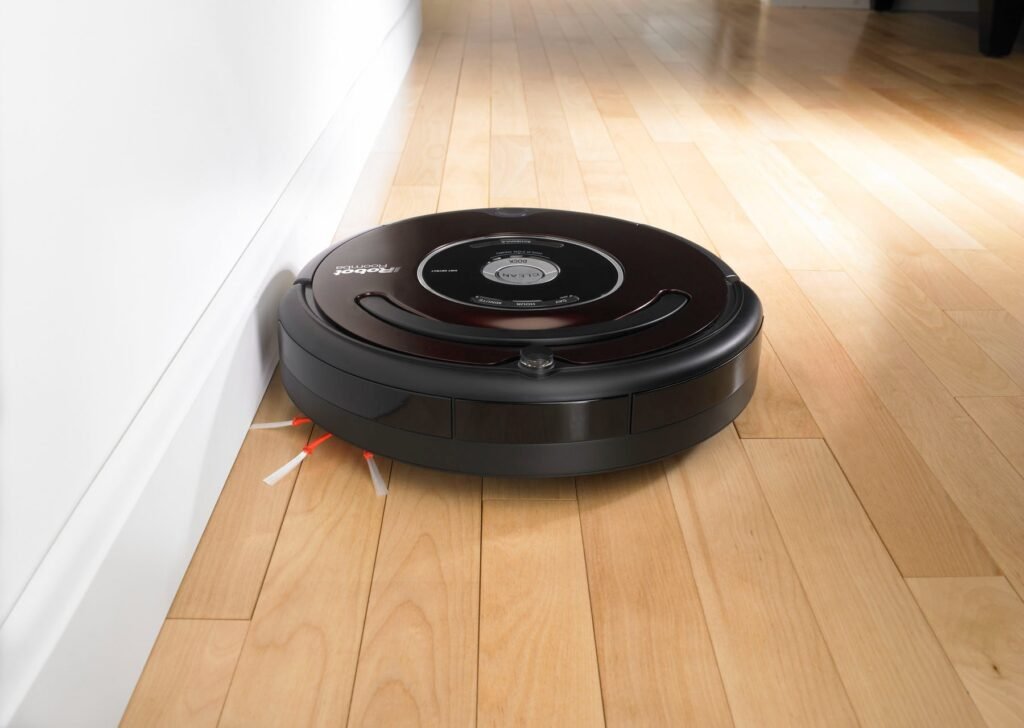
✨iRobot Roomba Series: The name that started it all, iRobot’s Roomba series offers a wide range of models to suit different needs and budgets. From the budget-friendly iRobot Roomba 675 and iRobot Roomba 694 with its Dirt Detect technology to the high-end iRobot Roomba J7 and iRobot Roomba s9+ with automatic dirt disposal and detailed home mapping, there’s a Roomba for every home.
✨Neato Botvac Series: Neato Botvac models stand out with their D-shape design, which allows them to clean corners more effectively than round models. The Botvac D7 is particularly noteworthy, with its laser-guided navigation and zone-cleaning feature that lets you specify areas for the robot to focus on.
✨Eufy RoboVac Series: Eufy offers models like the RoboVac 11S – a slim, quiet, affordable robotic vacuum cleaner with decent suction and a simple remote control. It’s an excellent choice for those dipping their toes into the world of robotic vacuums for the first time.
✨Roborock S Series: Roborock impresses with models like the S6 MaxV, which combines vacuuming and mopping capabilities. It also uses dual cameras for obstacle recognition and avoidance, making it a smart choice for homes with lots of furniture or pets.
Each brand and model of robotic vacuum cleaner brings something unique to the table. The iRobot Roomba series, for example, is known for its patented Dirt Detect technology, which identifies dirtier areas and cleans them more thoroughly. The high-end models even offer automatic dirt disposal, meaning the robot empties its dustbin into a bag in the docking station.
Neato Botvac models, with their distinctive D-shape, are designed to clean corners and edges more effectively than their round counterparts. Their LaserSmart technology maps and navigates your home, allowing the robot to clean in straight lines instead of a random pattern.
Eufy’s RoboVac series excels in providing a balance between cost and performance. They may not have all the bells and whistles of the pricier models. Still, they do a solid job of vacuuming, offering features like BoostIQ technology that automatically increases suction strength when needed.
Roborock stands out by offering models that can both vacuum and mop your floors. They also use advanced navigation systems; some models feature dual cameras for better obstacle recognition.
Pros and Cons of Robotic Vacuums
A robot vacuum cleaner advantages and disadvantages are essential to know, depending on your lifestyle and preferences. Here are some of the most common pros and cons to consider:
✅Advantages
Time-Saving: The most significant advantage of robotic vacuum cleaners is the time they save. Set them up, and they’ll clean while you focus on other tasks or simply relax.
Effortless Operation: These devices are easy to use. Most come with a companion app to remotely control and monitor the vacuum. Some models are even compatible with voice assistants, allowing hands-free operation.
Consistent Cleaning: Robotic vacuum cleaners can clean your home regularly, ensuring consistent cleanliness. You can schedule them to clean at specific times, even when you’re not at home.
Reaches Difficult Areas: Their compact size allows them to clean under furniture and other hard-to-reach places that might be difficult with a traditional vacuum cleaner.
Ideal for Individuals with Mobility Issues: For the elderly or those with mobility issues, robot vacuums can greatly help, taking over a physically demanding task.
❎Limitations and Drawbacks
Limited Dirt Capacity: One of the disadvantages of robot vacuum cleaner is due to their compact size, robot vacuum have a smaller dust bin than traditional vacuums, requiring more frequent emptying.
Struggle with Certain Types of Dirt: While they handle everyday dust and debris well, robot vacuums can struggle with larger particles or heavy dirt. They’re also not ideal for deep-cleaning carpets.
Can Get Stuck: Even with advanced navigation systems, robotic vacuum cleaners can sometimes get stuck, especially on thick rugs or when encountering obstacles like cords and toys.
Battery Life: While most models can easily clean a small to medium-sized home on a single charge, larger homes might require a vacuum to recharge before finishing the job.
Price: High-end robot vacuum cleaners can be expensive, although budget-friendly options are available.
Robotic Vacuum Cleaner Buying Guide
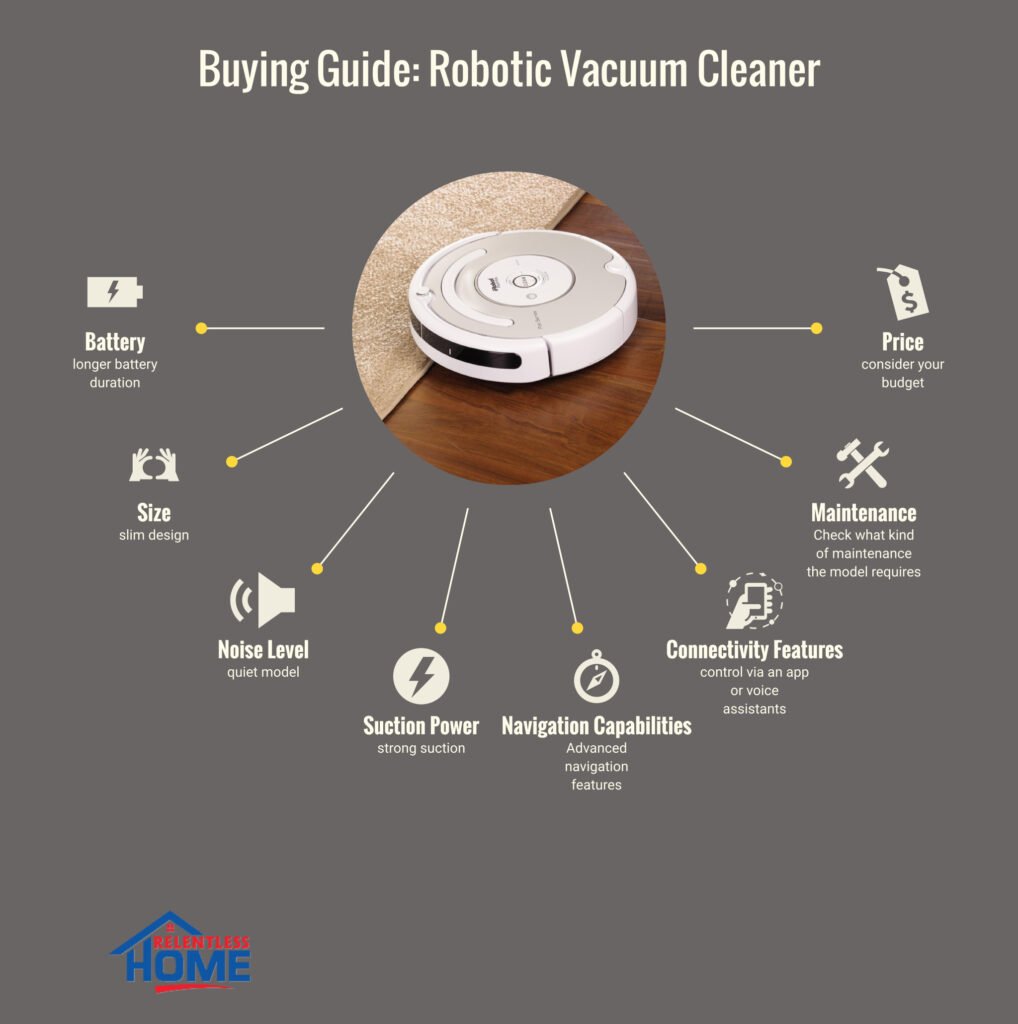
If you’re considering purchasing a robot vacuum cleaner, here are some factors to keep in mind before making your decision:
💨Battery
The battery duration determines how long the vacuum can clean before recharging. If you have a large house, you’ll want a model with a longer battery duration. However, remember that most models will return to their dock to charge automatically when the battery is low.
💨Size
The height of the vacuum affects which area it should clean. A slim design allows the vacuum to fit under more furniture, but it might also mean a smaller dustbin.
💨Noise Level
If noise concerns you, look for a quiet model. This feature is particularly useful if you plan to run the vacuum at night or while working or studying at home.
💨Suction Power
The ability to pick up dirt and debris varies between models. If you have pets or kids, or your house tends to get dirty quickly, you might need a model with strong suction.
💨Navigation Capabilities
Advanced navigation features like smart mapping can make the cleaning process more efficient, as the vacuum can remember the layout of your house and avoid obstacles. However, models with these features tend to be more expensive.
💨Connectivity Features
We can control most robotic vacuum cleaners via an app on your smartphone, and some even offer compatibility with voice assistants like Alexa or Google Assistant. Consider these features if convenience and smart home integration are important to you.
💨Maintenance
Check what kind of maintenance the model requires. For example, how often do you need to empty the dustbin, and how easy is it to do? How frequently do the filters need to be replaced?
💨Price
Last but not least, consider your budget. Robotic vacuum cleaners can range from budget-friendly to quite expensive for high-end models with advanced features. Remember, the most expensive model isn’t necessarily the best for your needs.
Frequently Asked Questions
Q: What surfaces can robotic vacuum cleaners clean?
A: Robotic vacuum cleaners are versatile and can clean various surfaces, including hardwood, tiles, and most types of carpeting. However, they may struggle with thick carpets or rugs, and some models might not perform as well on high-pile carpets. Also, while some robotic vacuum cleaners can handle small amounts of liquid, they are primarily designed for dry cleaning. So, it should avoid spills or wet areas.
Q: How long does the battery of a robotic vacuum cleaner last?
A: The battery duration of a robotic vacuum cleaner varies widely depending on the model and its features. However, on average, most robotic vacuum cleaners can operate on a single charge for about 60 to 120 minutes. High-end models may offer up to 150 minutes of cleaning time. Remember, most robotic vacuum cleaners have auto-docking features, meaning they will automatically return to their charging dock when the battery level is low.
Q: How often should I clean my robotic vacuum cleaner?
A: The frequency of cleaning your robotic vacuum cleaner depends on usage. However, emptying the dustbin after each cleaning cycle is generally recommended to maintain optimal performance. You should clean the filter every week and replace it every two months, while the brushes should be cleaned every one to two weeks to ensure they’re free of hair and other debris. Always refer to the manufacturer’s instructions for specific maintenance guidelines concerning your particular model.
Q: Can robotic vacuum cleaners work in the dark?
A: Yes, most robotic vacuum cleaners can operate in the dark. They use infrared sensors to navigate and detect obstacles or drop-offs like stairs. However, some models that use cameras for navigation might struggle with low-light conditions. Always check the manufacturer’s specifications to understand how your model operates in different lighting conditions.
Q: Can I use a robotic vacuum cleaner if I have pets at home?
A: Absolutely! Many robotic vacuum cleaners can handle pet hair and dander. These models often come with special brushes and high suction strength to pick up hair from your floors and carpets effectively. However, keep in mind that the efficiency of the vacuum in dealing with pet fur can vary based on the model. Some vacuums may also have a smaller dustbin capacity, which would require more frequent emptying if your pets shed a lot. Always check the specifications and reviews to ensure your chosen model is up to the task.
Conclusion
Robotic vacuum cleaners offer a compelling blend of convenience, innovation, and efficiency. They’re not just gadgets but practical tools that can significantly enhance your home cleaning routine. From the time-saving benefits to the ability to reach those tricky nooks and crannies, these devices have proven to be more than just a novelty.
However, like any investment, it’s essential to consider your specific needs and circumstances. Not every robotic vacuum cleaner will be the right fit for every home or lifestyle. By carefully considering factors like size, battery, noise level, and price, you can find the perfect robotic companion to keep your floors sparkling clean.
We hope this guide has provided valuable insights to help you navigate the world of robotic vacuum cleaners. We’d love your thoughts, experiences, or questions in the comments below. Which brand or model are you considering? Do you already have a robotic vacuum cleaner, and how has it changed your cleaning routine? Your feedback helps us provide more relevant and helpful content in the future. So join the conversation, and let’s embrace the future of home cleaning together!



